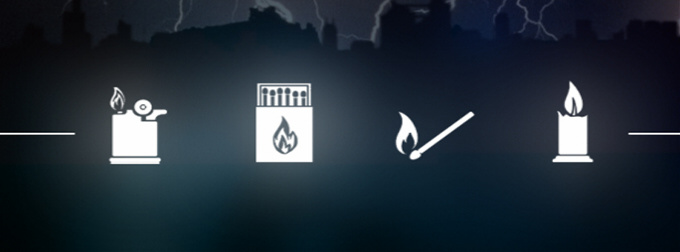Preparing for an Electrical Power Outage

What would you do if your business suddenly lost power? Advanced planning is critical to minimize the risk to your operations. Are you ready? If not, where do you start? Here are some suggestions that can help.
Know the System
The first step in preparing a blackout response plan is to become thoroughly familiar with the electrical distribution system layout and design in your facility. However, most power systems are quite elaborate and complex, and it would be impractical to expect someone to commit a system design to memory — not to mention dangerous. That is why having updated system documentation is so important for anyone responsible for the operation of a power system, regardless of the size. If you do not have one-line diagrams that accurately reflect the present configuration of your system, then step number one of your plan is to get them updated.
An effective one-line diagram will clearly show how the main components of the electrical system are connected, including redundant equipment and available spares. Details on equipment ratings are typically shown, and it is helpful to identify each major component with a unique name. In addition to showing the equipment identifier on the drawing, a permanent equipment label should be mounted onto the component itself. This greatly reduces the possibility of operating the wrong piece of equipment during an emergency.
Critical Loads for Emergency Power
Once the design of the system is well documented and understood, it is important to identify critical loads that will require emergency power in the event of a power outage. Typically, emergency generation can not be provided for all of the facility’s loads, so some decisions need to be made as to what equipment is absolutely essential during the outage. Once identified, these loads should be clearly marked on the one-line diagrams as being "emergency loads."
Ideally, all critical or emergency loads should be fed from common circuits, separate from non-emergency loads. This may require that some equipment be rewired to other circuits, but this will make it much easier to supply emergency generation during an outage
Once the emergency circuits have been established, you will need to be careful that future loads added to these circuits fit the criteria of being "critical." Very often, new loads are added to any electric panel that may have an open circuit breaker, regardless of its importance. This results in an "emergency" panel being loaded with non-critical equipment for which emergency generation during an outage is not necessary.
Surge Protection
Probably the greatest cause of damage to equipment from a power outage is from the electrical surge that is thrust through the system when the power first comes on. Fortunately, there is a way to protect against these phenomena, but very few businesses take the steps needed to achieve this protection.
By installing a surge protection device (SPD) on the incoming electrical service of a building, the damage caused by most externally generated surges (such as lightning or utility operations) can be greatly reduced. Further protection is achieved if SPDs are installed on distribution panels supplying critical or sensitive loads, and locally at the equipment itself. This layering of SPDs throughout a facility is known as a "Zone of Protection" approach, and is the most effective way of protecting your facility against electrical surges, including lightning.
Power Outage Procedures
Again the answer lies in planning — in this case having well-written, easily understood procedures that can be followed without confusion. We already mentioned the need for updated one-line diagrams, but make sure they are kept in a central location with all of the other necessary documentation. The same goes for the list of emergency generators and the loads to which they will be connected. Having step-by-step procedures on how to connect each portable generator will save a great deal of time and stress come crunch time.
Finally, to help your SPDs protect your equipment, you should have a procedure for disconnecting or turning off loads (even though they are not running when the power is out). This will limit the equipment exposed to the surge when the power is restored.
Start by simply turning electrical equipment to the OFF position. Depending on your system configuration, you may need to open circuit breakers or disconnect switches to isolate equipment. Then, when power is restored, close circuit breakers and disconnect switches closest to the supply source first.
Next, close in circuit breakers or turn on switches one at a time, working toward the load, until all of the equipment is energized and power is restored. This procedure also should be followed when connecting portable emergency generators to critical loads. Make sure the circuit breakers and disconnect switches in the circuit are open before the generator is started. Then slowly close in one breaker or switch at a time, working from the source (generator) to the load (equipment).
Careful pre-planning is the key to successfully reducing risk to your business caused by power interruption. Take steps today to protect your business from the adverse effects of power interruption.
